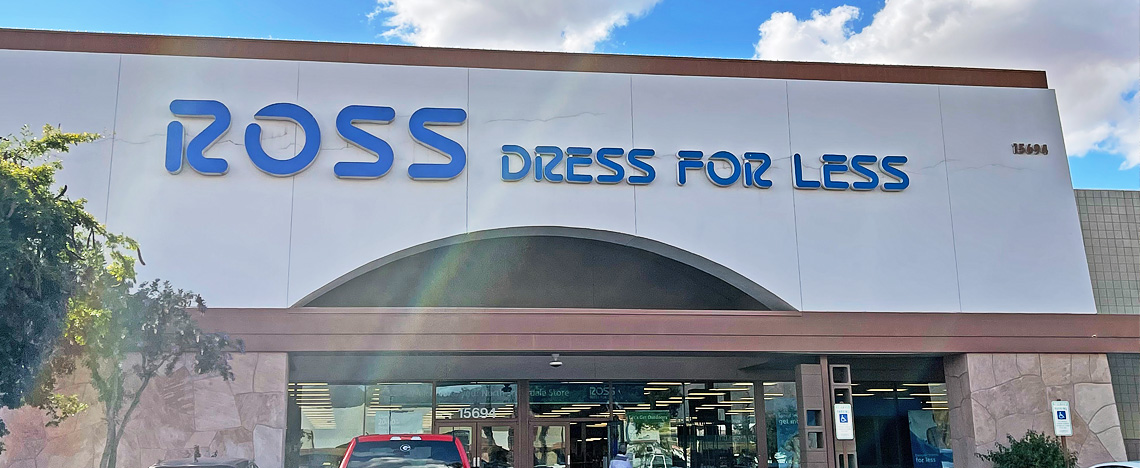
How I Worked
Employment
When I retired, I dreamed of working half a day, but not doing mental work. I even tried to look for a job at an employment agency, but without success. Then, due to my travels, that idea faded away.
At the very beginning, when I arrived here, I felt like I had a lot of free time. Mark was at school, everyone was at work. Well, I would cook, clean, sit at the computer, read, or work in the backyard (it wasn’t so hot then), and that was it. I decided to try to find a part-time job, especially since now my Green Card allows me to do so.
Valentina called the manager of Ross, the store where she worked when she first arrived, and asked if they needed a worker who poorly understands and speaks English. It turned out that there is work for everyone at Ross, whoever wants to work. The store manager said she would hire me; for this, I needed to register on the Ross website and submit an application for the position I was interested in. We went to the Ross chain store’s website, registered as warehouse workers, and indicated the store address where I wanted to work. After a while, I received a response email with an automatic text like: “Dear Tatyana, we are so glad you decided to join our team. Please follow the link to fill out the necessary additional information about yourself for the background check.”
This check is called a “background check”, where information from previous workplaces, criminal history, and education qualifications for the position are verified in the relevant databases. The verification can take up to two weeks and lasts longer the higher the position the applicant is applying for. In my case, it went very quickly, and I was sent an offer.
But don’t think that getting a job is as easy as in my case.
An offer is a letter indicating the work location, conditions of employment: full or part-time, hourly wage or salary, and the date the employee is hired; it is recommended to contact the manager to clarify the schedule. The employee must accept or decline the offer if something does not suit them. But don’t think that getting a job is as easy as in my case. The higher the position, the more interviews you need to pass with different members of the company. And the interviews are not easy, and sometimes this period takes a very long time before receiving the offer.
Ross
This is a large discount store that sells warehouse leftovers or brand-name goods that have not sold in various branded stores. Ross sells clothing, shoes, toys, and home goods. You can find dishes, pillows, rugs, paintings, clocks, mirrors, small furniture, and more there. All items are new, but at lower prices than in branded stores.
I was assigned to work in the warehouse. Work in the warehouse started at 5:15 AM. At this time, a truck (a large semi-trailer truck) arrived, and the driver unloaded boxes of goods onto a conveyor belt. The barcodes on the boxes were scanned for inventory, and then warehouse workers had to separate the boxes with clothing, unpack the other boxes, and place the items on wheeled shelves before distributing them throughout the store. Some items, like wall clocks, paintings, mirrors, and furniture, were unpacked immediately and taken to the sales floor. Boxes with clothing went down a different conveyor belt, where the clothing was unpacked, and almost every item was tagged with a “hard tag”—a small plastic tag that beeps when passing through the store’s exit (if it is not removed at the cash register). Then the item was hung on a rack, and a plastic size tag called “nabs” was attached to it before being placed on a special cart. The filled carts were then distributed and the clothing was displayed in the sales area.
I found that working with my hands was not easy, especially for someone who had never worked at such a pace. It was essential to know the store layout well to place the items correctly on the shelves of the carts and then quickly distribute them throughout the store. It was also necessary to understand the range of products well. When looking at some jars, they looked nice, and it was hard to tell whether they were bath products, facial or body cosmetics, or for cars. For example: small dresses could be for dolls or newborns, but it turned out to be dog clothing. It was necessary to read labels and understand the codes on the tags.
Work
I was assigned to unpack and hang clothes. This task had many nuances. Firstly, American sizes differ from Russian sizes. There are many conventions; for example, some clothing items require letter sizes while others use numerical sizes. Children’s clothing has its own numbering, and junior clothing has a numbering different from adult sizes. I was helped and trained by a Russian-speaking girl who worked in the warehouse when Valentina was the manager and knew her well.
The first time was very difficult. I had to read labels to distribute sizes correctly and then place the items properly in the store. At first, I worked very slowly. I often had to change my reading glasses between near and distance vision. Later, we went to Costco to see the optometrist, and I got glasses that have three zones: the upper zone for distance, the middle for computer work, and the lower zone for reading up close. However, I needed to get used to these glasses, as they create tunnel vision; if I needed to look sideways, I had to turn my whole head, not just my eyes. Nevertheless, with them, my work became faster and easier.











